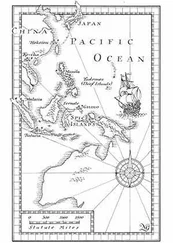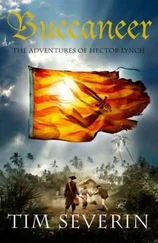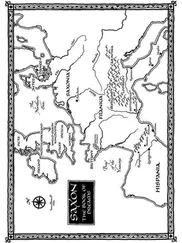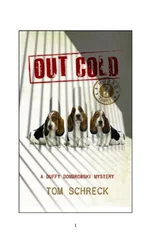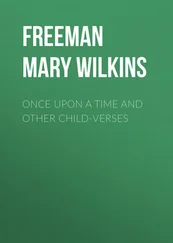The abb in my time was Aidan. A tall, balding and colourless man with pale blue eyes and a fringe of curly blond hair, he looked as though all the blood had drained out of him. He had spent his entire adult life in the monastery, entering when little more than a child. In fact, it was rumoured that he was the son of an earlier abb, though it was more than a century since monks were allowed to have wives. Strict celibacy was now the outward show, but there were still monks who maintained regular liaisons with women in the extensive settlement which had grown up around the holy site. Here lived the lay people who provided casual labour for the monks - as their carters, ploughmen, thatchers and so forth. Whatever his origins, Abb Aidan was a cold fish, conservative yet ambitious. He ran the monastery along the same unwavering guidelines that he had inherited from his predecessors and he shunned innovation. His great strength, as he would have seen it, was his devotion to the long-term interests and continuity of the brotherhood. He intended to leave the monastery stronger and more secure than when he was first made abb, and if such a stiff figure recognised the frailty and impermanence of human existence, it was in order to concentrate his energy on longer-lasting material foundations. So Abb Aidan strove to increase the reputation of the monastery by adding to its material marvels rather than its sanctity.
He was fixated on finances. Brother Mariannus, the treasurer, saw the abb more than any other member of the community, and he was expected to render an almost daily account of the money that was owed, the taxes due, the current value of the possessions, the costs of administration. Abb Aidan was not avaricious for himself. He was interested only in enhancing the prestige of St Ciaran's, and he knew that this required a constant flow of income. Anyone who threatened that revenue was dealt with harshly. Most of the monastery's income came from renting out livestock, and in the year before I arrived a thief was caught stealing the monastery's sheep. He was hanged publicly on a gibbet just outside the holy ground. An even greater stir came in the second year of the abb's rule. A young novitiate absconded, taking with him a few articles of minor value — a pair of metal altar cups and some pages from an unfinished manuscript in the scriptorium. The young man disappeared in the night and managed to travel as far as the lands of his tuath. Abb Aidan guessed his destination and sent a search party after him, with orders that the stolen items be recovered and the miscreant brought back under guard. When I arrived at St Ciaran's, one of the first stories I was told in scandalised whispers was how the young monk had arrived on the end of a leading rope, his wrists bound, his back bloody from a beating. The other monks had expected that he would suffer a strict regime of mortification to atone for his sins, and they were puzzled when the young man was only held overnight at the monastery, then led away to an unknown destination across the river. A month later news filtered through that the young man had been placed in a deep pit and left to starve to death. Apparently it would have been profane to shed the blood of someone who had been about to promise himself to the Church, so the abb had revived a method of execution rarely used.
The yield from Abb Aidan's meticulous husbandry of the monastic finances was spectacular. The monastery had long been known for its scriptorium - the exquisite illumination of its manuscripts was famed throughout the land - but there was now a whole range of other skills devoted to the glorification of the monastery and the service of its God. Abb Aidan encouraged work in precious metals as well as in enamel and glass. Many of the craftsmen were the monks themselves. They created objects of extraordinary beauty, using techniques they sifted from the ancient texts or had learnt in foreign lands during their travels. And often they exchanged ideas with the craftsmen who came to the monastery, attracted by its reputation as a generous patron of the arts. I was put to work for one of these craftsmen, Saer Credine the master stonemason, because our abb believed that nothing could express immutable devotion better than monuments of massive stone.
Saer Credine was surprisingly frail-looking for someone whose life was spent carving huge blocks of stone with mallet and chisel. He came from a distant region to the south-west where the rocks break naturally into cubes and plates, and his tuath was a place where stoneworkers have been reared and respected for time out of mind. Any fool, he would say, could attack a lump of stone with brutish strength, but it took skill and imagination to see the finished shape and form within the rock and know how to coax that shape from the stone. That was the God-given gift. When he first made this remark, I thought he meant that the White Christ had endowed him with his skills.
Abb Aidan had commissioned him to produce an imposing new stone cross for the monastery, a cross to be the equal of any of the splendid crosses which already stood in the monastic grounds. The base was to show scenes from the New Testament and the shaft would be incised with the most renowned of St Ciaran's many miracles. The senior monks had provided the stonemason with rough sketches of the scenes - the resurrection of the White Christ from his tomb, of course, and the wild boar bringing branches in its jaws to make St Ciaran's first hut - and they checked that the tableaux had transferred correctly to the face of the stone before Saer Credine gouged the first groove. But from that moment onward there was little that the monks could do, and everything depended on Saer Credine's competence. Only the master stonemason knew how the stone would work, and by subtle distinction how to lead and instruct the eye of the beholder. And, of course, once the carver's blow had been struck there was no going back, no rubbing out, starting again and altering the moment.
By the time I joined his labour force, Saer Credine had the massive rectangular base nearly complete. It had taken him five months of work. On the front panel a shrouded Christ was emerging from his coffin watched by two helmeted soldiers; on the rear panel Peter and Christ shared a net while fishing for the souls of men. The two smaller end panels were simple interlace carved by Saer Credine's senior assistant because the master craftsman was already working on the great vertical shaft. It was of a hard granite, brought by raft down the great river and laboriously hauled up the hill to the shed where we worked. When I arrived, the stone lay on its side, sheltered by a roof. It was supported on huge blocks of wood so as to be at a convenient height for Saer Credine to strike the surface. My first task was no more than to pick up the stone chips that dropped into the muddy ground, and at dusk my duty was to cover the half-completed work with a layer of straw against the frost. I was also, by default, the nightwatchman because no one had assigned me a sleeping place and I slept curled up on the straw bales. At breakfast time I went to stand in line with the other servants and indigents who came to the monastery kitchens to seek charity of milk and porridge, then I carried the food back to eat as I squatted beside the great block of stone that rapidly became the fixed point of my slave's existence. After a few days of gathering stone chips it was a short step to being given the task of brushing clean the worked face of the stone whenever the master craftsman stepped back to view his work or take a break from his labour. Saer Credine never made any comment on how he thought his work was progressing, and his face was expressionless.
Within a month I had graduated to the task of sharpening Saer Credine's chisels as well as wielding the sweeper's brush, and he even let me strike a few blows on the really rough work, where there was not the slightest chance that I could do any harm. Despite my stiffened left hand, I found that I was fairly deft and could cut a true facet. I also discovered that Saer Credine, like many craftsmen, was a kindly man beneath his taciturn exterior, and extremely observant. He noted that I took a more than usual interest in my surroundings, wandering round the monastery enclosure whenever possible to see what was going on, examining the other stone crosses that already stood with their instructional scenes. But, typically, he said nothing. After all, he was a master craftsman, and I was a doer, nothing.
Читать дальше

